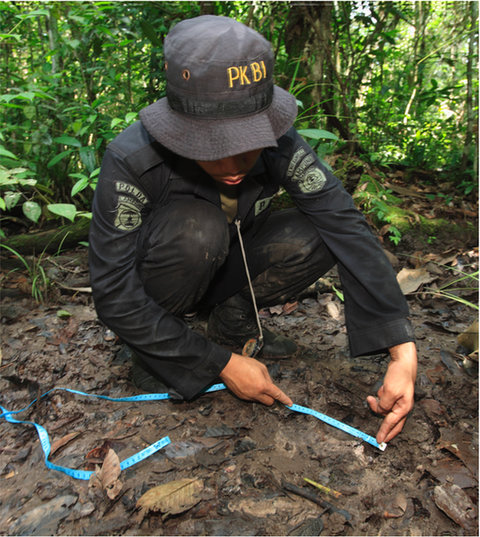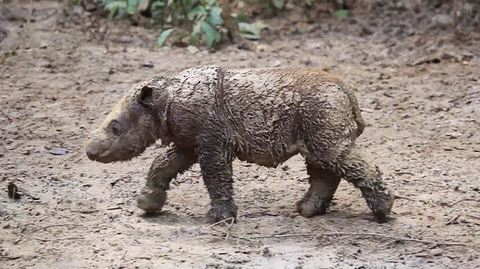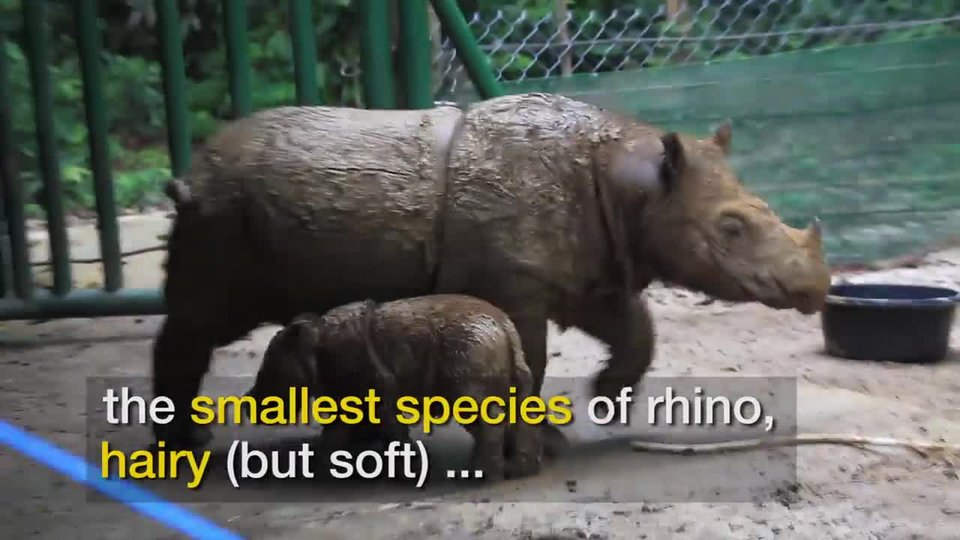Thetraphadbeenset,buttherewasnorushinga770‑kilogram(1,700‑pound)rhino.Theconservationists waitedandwaitedandwaited.Then,ithappened.Therhinosteppedontoaleafyspot.Itfellintoashallowpitontheforestfloor.Theconservationistshaddugthatpitandcovereditwithleaves.Butwhydidtheywanttotrapa rhino?
It’sallpartofamulti‑nationalplantosavetheSumatranrhinofromextinction.It’scalledtheSumatranRhino Rescue.

The Sumatranrhinocerosisthesmallestoftherhino family.

ThisrhinoisnowlivingintheSumatranRhinoSanctuary.Here,itissafefrom poachers.
RhinosinTrouble
Allfiverhino speciesarethreatenedwithextinction.Yet,theSumatranrhinoisthemost endangeredofall.Itsnumberhasdecreasedmorethan70 percentoverthelast20 years.
Rhinosaresoughtafterfortheirvaluablehorns.Forcenturies,theyhavebeenusedinAsianmedicine.Powderedrhinohornhasbeenprescribedasamedicineforeverythingfromasthmatochickenpox.Noproofexiststhatrhinohornscureillness.Yet,peoplewantthem.Theycansellforpricesthatrival gold.
ARescuePlan
TheSumatranRhinoRescueplanistosafelycaptureasmanywildrhinosaspossible.Therhinoswouldbetakentonearbysanctuaries.Scientistsandwildlifemanagerswouldthenassistinthereproductionofthe rhinos.

A conservationistmeasuresarhino track.
Rightnow,there’sonlyoneplacewherethis captivebreedingcanhappen.It’scalledtheSumatranRhinoSanctuary.Captivebreedinghasbeentriedbefore.Butnotenoughwasknownabouttheserhinostohelpthem reproduce.
Sumatranrhinosaresolitaryanimals.Theydon’tlivetogether.Arhino’spregnancylastsabout15months.However,ifrhinofemalescan’tfindamate,theirbodieschange,anditbecomesharderforthemtobecomepregnant.Thiscreatesalotof problems.
ProtectTheNatural World
Protectingtheplanetisvital!TheNationalGeographicSocietyhassetagoaltohelpimprovethestatusof100 speciesorpopulationsby 2030.

